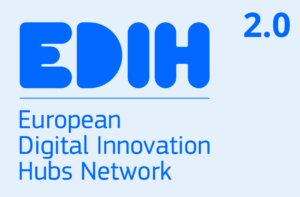This early paper published in 2022, titled ”Addressing the emergence of drones – A policy development framework for regional drone transportation systems” delves into the evolving landscape of Advanced Air Mobility (AAM) and the policy framework necessary for its safe and successful implementation. As drones continue to gain traction for long-term transport purposes, the paper aims to provide a comprehensive framework for addressing the multifaceted challenges associated with integrating drones into existing transportation systems. It takes a resilience and sustainability perspective to address how this paradigm shift in transport would bring forth many considerations for planning and policy.
The research is grounded in a systematic literature review and interviews with key stakeholders, leading to several significant findings:
1. Conceptual Elements for Policy Development:
The drone ecosystem can be looked at from three different system levels:
- Primary Technology: This includes vehicle-related aspects that need to be regulated to ensure safety and efficiency.
- Functionality: Encompassing the infrastructure and operational requirements essential for AAM systems.
- Adoption: This focuses on societal, market, and environmental factors that influence the acceptance and integration of AAM technologies.

2. Risk governance and planning for AAM:
The international-level EASA policies for integration of AAM in its member states addresses the needs for certification and safety of AAM vehicles, infrastructure and operations through. Implementation on a municipal, regional, and national level requires investigation into the social, environmental, and economic aspects of novel drone-based transport systems. There exists a substantial gap in the existing evidence base regarding the policies that can enable safe AAM implementation to leverage its benefits. This paper identifies risks and challenges that need to be evaluated and addressed for the AAM ecosystem during policy planning.
3. Multi-Level Governance Model:
The paper emphasizes the lack of a comprehensive multi-level governance model for AAM. It calls for a clear mapping of legal authorities and their roles within a regional regulatory framework, which is crucial for effective governance and coordination among various stakeholders.
4. Need for Empirical Studies:
More empirical and qualitative case studies is required to support the development of AAM policies. This includes scenario analyses and multi-criteria decision analyses that can provide insights into the implications of AAM deployment on urban environments and transportation systems.
Implications for Advanced Air Mobility and Regulations
The implications of the findings are profound for technical members involved in urban air mobility and regulatory frameworks:
- Collaborative Frameworks: Developing AAM requires establishment of public-private partnerships to co-create solutions that address both technological advancements and regulatory needs. This collaboration is essential for fostering innovation while ensuring compliance with safety and environmental standards.
- Regulatory Support for Testing: The need for regulatory frameworks that support test beds and demonstration projects is highlighted. Such initiatives will allow stakeholders to experiment with AAM technologies in real-world settings, facilitating the refinement of both technology and regulatory approaches.
- Capacity Building: The paper underscores the importance of building local and regional capacities to manage AAM effectively. Policymakers must ensure that local authorities are equipped with the necessary knowledge and skills to navigate the complexities of AAM integration.
- Sustainability Considerations: The establishment of a carbon budget for AAM systems is proposed to align the growth of AAM with global sustainability targets. This proactive approach is vital for mitigating the environmental impacts of increased air traffic and ensuring that AAM contributes positively to address mobility challenges.
Thus, this paper significantly contributes to the understanding and development of policies for Advanced Air Mobility by identifying gaps in existing literature, proposing a comprehensive policy framework, engaging with stakeholders, advocating for multi-level governance, emphasizing empirical research, and addressing sustainability concerns. By identifying key findings and implications, it serves as a valuable resource for technical members engaged in the development and regulation of urban air mobility systems, emphasizing the need for a collaborative, evidence-based approach for overall policy development.
Aishwarya Raghunatha – Industrial PhD student, an expert in drone transport planning and sustainability

This article was a summary of one of four research papers by Aishwarya Raghunatha. Aishwarya (Aisha) is an industrial PhD student in Advanced Air Mobility and is therefore one of Aero EDIH’s resources. Aishwarya Raghunatha is affiliated with the Future-Proof Cities research program at the University of Gävle.
Her research focuses on Urban Air Mobility (UAM), exploring how hydrogen-powered or electric-powered delivery drones and drone taxis can contribute to sustainable and environmentally friendly transport systems in urban regions. Specifically, her project examines how social sustainability aspects, from the perspective of community inhabitants, are affected by digital and technological climate solutions aimed at enhancing resilience in critical infrastructures.















